Learn to Ride the Easy Way as an Adult Beginner
If you, or a friend, never rode a bicycle before, take heart.
It can be easier to learn to ride from scratch than to unlearn habits from childhood.
On August 28, 2017, I had the pleasure of watching John Ciccarelli, owner and Head Coach of Bicycle Solutions (LCI #453) take an adult beginner from nothing to starting, stopping, balancing, steering and turning in a couple of hours. An earlier post promised this follow-up to show how he accomplished this.
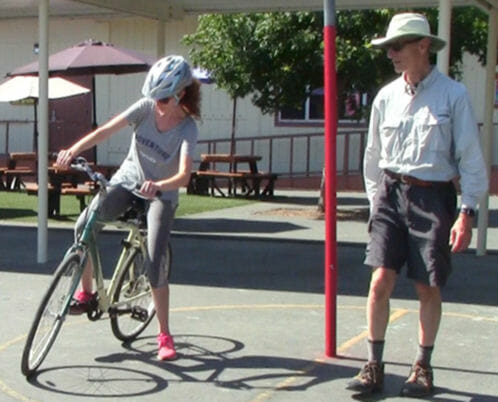
Pre-pandemic, John Ciccarelli assists a student preparing for a power-pedal start.
John explains his Learn To Ride method:
Our Learn To Ride method is to start with a bike that basically fits, remove pedals, and lower the saddle so the learner can sit with both feet flat on the ground and knees slightly bent. We’ve made a balance bike. Handlebars no higher than the diaphragm.
We use a slightly inclined schoolyard or parking lot. Sloped enough that a soccer ball when started will keep rolling but not pick up speed.
When the client can glide for 10 seconds repeatedly and confidently, if it’s an adult we re-install one pedal, raise the seat 1.5″-2″, maybe the handlebars too, then teach how to glide with a weighted leg on a pedal. That usually doesn’t take very long, and it’s well worth doing. If it’s a kid we skip this and go to 2 pedals.
Re-install the second pedal. Shift the bike to a gear that will give moderate resistance when the student pedals at the speed at which they’ve been comfortably gliding. Do the same “scooter start” as when there was just one pedal, start the glide as before with the second foot hanging in space, then “find your pedal” (which is held in the high position by the steady leg on the other side) on the fly. Begin pedaling. We call this a “gliding start” or “gravity start.”
Sometimes, due to a combination of bike and rider geometry, the “gravity start”/ “find your pedal” step proves difficult. If so, we skip it and do the power-pedal start.
Power-pedal start: both brakes applied, bike leaned toward “ground foot”, which is flat on the ground (not tip-toe), raise pedal to 2 o’clock (right side) or 10 o’clock (left side). Practice the brake release by counting down from 3: “3, 2, 1, release” [“put your fingers away”], then push hard to start the bike. Immediately “sit up straight” and “ride tall.”
Watch it happen!
Practice is necessarily very repetitive, and our 5-minute video succeeds in showing the student’s progress step by step. The same steps work for self-teaching.
This video is from before the Covid-19 pandemic. John and his instructor partners at Bicycle Solutions continue to teach people to learn to ride now at several locations around the San Francisco Bay Area. In an earlier post, John describes his measures to avoid pandemic risks.

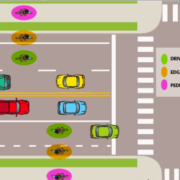
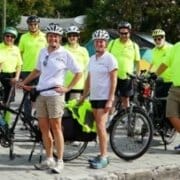
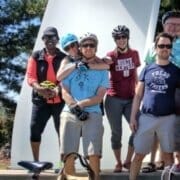
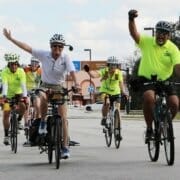
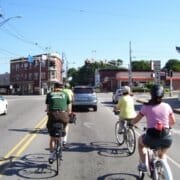
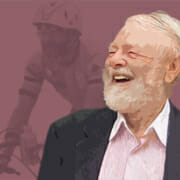
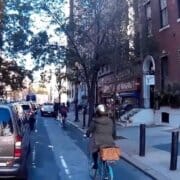
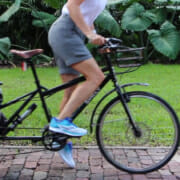



Very good stuff John and John!
This is becoming EVEN more important for beginners and/or less skilled/less experienced people starting to use e-Bikes!!!
One 2019 E-Bike Safety study (https://peopleforbikes.org/our-work/e-bikes/research-and-stats/) concluded older riders were more vulnerable to solo crashes, during dismounts. I bet there are also lateral falls, during mounts.
Gary Cziko, a USA Cycling Coach with Distinction friend, and myself are working on a virtual project (a series of short presentations) to educate people wanting to use E-Bikes –entitled “Is an E-Bike for me?” We hope this will generate interest in some in-person E-Bike Safety sessions, in conjuction with the City of Redlands, CA.